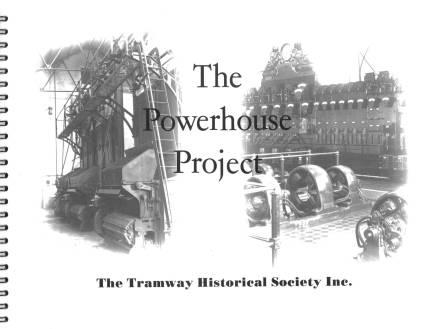
Note: the following is adapted from the publication “The Powerhouse Project”, published by the Tramway Historical Society Inc. in 2005. The production of this publication was generously supported by Lion Foundation and the Metro Charitable Trust. Copies of the full publication can be obtained from the Tramway Historical Society Inc.

The front cover of thePowerhouse Project Booklet
Introduction – a brief overview of the project.
The Powerhouse Project of the Tramway Historical Society (THS) is both audacious and inspiring. Put simply, it involves the building of a one megawatt (1 MW), coal-burning Edwardian power station at Ferrymead Heritage Park, Christchurch. Such power plants energized our early tramway systems and similar steam raising equipment was used extensively in industrial plants from textile mills to gold mines. Only a handful of such installations remains.
.jpg)
The front elevation of the proposed Powerhouse building.
The time is now ripe to add this essential part o tramway infrastructure to the Ferrymead Tramway. Currently power for the Ferrymead trams is obtained from a purpose build electrical substation connected to the National Grid; it represents the later stage in power supply development. That substation will be supplemented by the proposed power station which will represent the earliest method of providing power for the rams. It wll also demonstrate some of the steam-based technologies which served New Zealand so well from the late nineteenth century will well into the twentieth. Few remain in service today.
Substantial progress with the progress has already been made. A hospital in Nelson, a timber mill in Southland, a freezing works in Otago, a written off tug in Tauranga, even a tramway substation in Australia; all of these disparate localities, as well as many other, have been tapped as sources of the extraction of two complete, very large, Babcock and Wilcox boilers from Skellerup Industries in Christchurch.
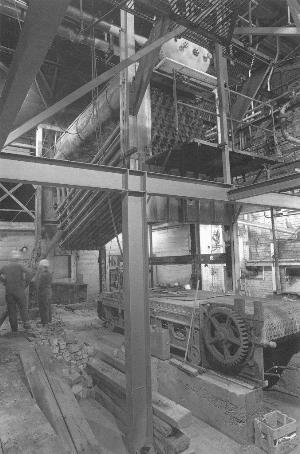
The second of two Babcock and Wilcox boilers being dismantled at Skellerup Industries
It remains to reassemble the boilers and other equipment and to provide buildings for the machinery and for explanatory displays so that the complete cycle – generation, conversion, distribution, and use – of the electrical power can be demonstrated.
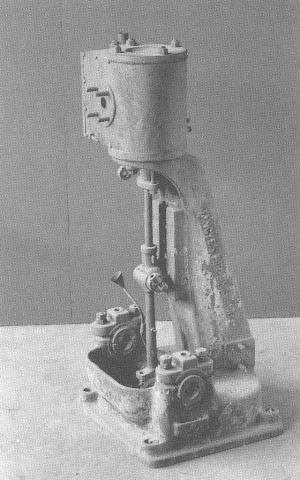
A incomplete and un-restored chain grate drive from the original CTB powerhouse
The completed facility will be a truly superb addition in its own right to Ferrymead Heritage Park. But beyond the spectacle, the educational value will be substantial, not only in the wider context of the sociology of mass transport and its effect on our cities and larger towns.
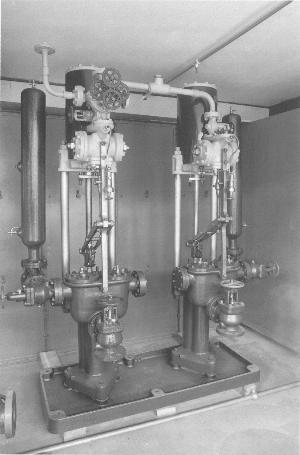
A restored piece of equipment
The size of the task is formidable, the financial requirements equally so, but anyone aware of the achievements since its inception in 1961 will surely appreciate that if anyone can to it, the Tramway Historical Society can.
The Proposal.
The Tramway Historical Society intends to build an operating tramway powerhouse; a 1 MW, coal-burning, steam-turbine based, Edwardian style powerhouse. It will be sited at Ferrymead Heritage Park, Christchurch, N.Z. as a museum exhibit to show how electricity was produced to power the earliest tramways.
Such a powerhouse can be considered in two parts: (i) the steam raising plant and (ii) the electricity generating and conversion equipment, each housed in its own area. The artist’s impressions show what is envisaged.
Steam raising will be achieved with a Babcock and Wilcox boiler. A second, identical boiler will be installed alongside the first but with the enclosing brickwork incomplete so that the interior layout can be seen. There will also be a small oil fired boiler to provide low pressure saturated steam to power engines within the powerhouse.
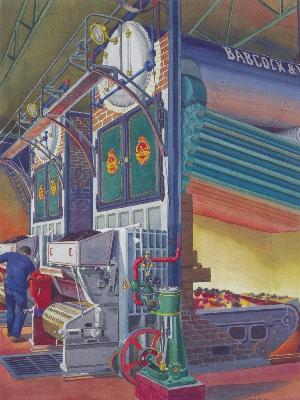
.jpg)
Artists Impression of the Boiler Room (Left). Compare this with the photograph of the boilers in the original CTB Powerhouse (Right). (Artist - Don McAra)
In the adjoining engine room there will be a Curtis turbine and alternator a well as two rotary converters, one delivering 600v d.c. for the tramway and the trolleybus system, the other delivering 1500v d.c. for the electric railway operated at Ferrymead by the Canterbury Railway Society Inc. In addition there will be a Browlett Lindley compound engine, the cooling tower drive engine, two condensers and a combined vacuum and circulating pump; all the necessities in fact, for a working powerhouse.
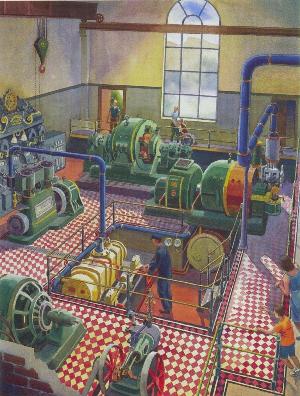
Artists Impression of the Engine Room (Artist - Don McAra)
[End of Project Description]